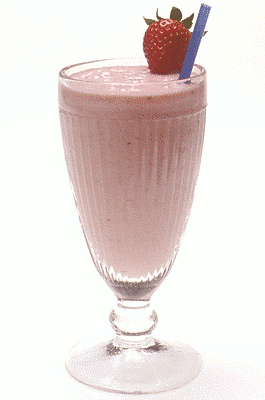There is evidence that humans have been consuming strawberries since the Stone Age, but it was much later that we began to cultivate and produce strawberries on a large scale. Today, there are strawberry farms and greenhouses; massive acreages are dedicated to the strawberry industry.
Romans
Early usage history of the strawberry dates back to the Romans, though written references are few and brief. Generally cited as growing in the wild, it is likely that cultivation had not yet begun.
"With thine own hands thou shalt thyself gather the soft strawberries growing beneath the woodland shade." - Metamorphoses, Book 13 by Ovid (8AD)
However, it is possible that a few growers existed, as there were some who used strawberries for their medicinal purposes.
Early France
By the 1300's, the French began to transplant Woodland Strawberries (Fragaria vesca) from the wilderness. At this point, strawberries were mostly grown for ornamental purposes. High class people including King Charles V planted extravagant crops in their gardens. These strawberries were tended to carefully and fertilized well. Runners were transplanted to empty sections, ensuring the quantities never dwindled. The industry had not yet developed by this point, but specific strawberry-growing methods were already in the making.
By the 1500's, instructions were available on strawberry growth. In Charles Estienne and Jean Liebault's L'Agriculture et Maison Rustique (1568), it was prescribed to replant the fields every three years, a method still in practice today. Hoeing and fertilization were also indicated, suggesting that cultivation at that point was fairly similar to today's home-grown methods.
Early England
During the 1400's, references to strawberry cultivation had already appeared. The Bishop of Ely grew strawberries in his Holborn garden to such success that it was mentioned in Shakespeare's Richard III. By the 1500's, physicians and apothecaries began to grow strawberries because they believed it had medicinal uses; books were written on the benefits of strawberries. Demand rose and regular farming of strawberries was established.
Although there is little information on the methods of cultivation used in England from that period, it is likely they grew strawberries with similar technique as France. In Tusser's Five Hundred Points of Good Husbandry (1557), strawberry growing is said to be a good form of employment for women. The most common species grown in England was also the Woodland Strawberry (Fragaria vesca), because of their abundance in the wild and easy transplant by runners.
Other Early Growers
Strawberries are found in the wild around the world, but most of the cultivation history has not been documented. There are earlier growers than the abovementioned, but minimal information has survived.
China: As strawberries also grew natively in Asia, it is thought that the Chinese have used strawberries for supposed medicinal purposes since th 26th century BC. However it uncertain when strawberries began to be cultivated.
Natives: North American natives did not grow their own strawberries, but foraged whatever grew in the wild. When American settlers came into contact, strawberries were traded, and the settlers soon began to grow their own.
Today
Several methods of cultivation are available today; each are effective for different uses. Some require newly developed technology, but early cultivation principles remain
Rows and mounds:
This method can be used for both home grown and commercial strawberries. The strawberries are planted on raised rows or mounds of dirt, and reused each year. The purpose of the rows and mounds is drainage: the excess water will flow down to the lower ground between the plants, so the strawberries do not flood (too much water can kill a plant). It also makes harvesting easier, as the harvesters are able to walk between the plants. Although the yields are typically lower than the plasticulture (see below) system, it is used in places with colder climates (shorter growing season), since it doesn't require replacing plants each year.
The principles of this method is similar to those of early strawberry growers. Although technology has made it more efficient, with better fertizilers, tools, and irrigation, the basic techniques are the same, and strawberries are still harvested by hand.

outdoors rows
http://www.serviceberryfarms.com/images/strawberry_rows2.jpg
Plasticulture:
The plasticulture method is the most common method is the most common method for commercially grown strawberries. As with the previous method, the plants are grown on raised beds. Each year, new beds are formed and covered with plastic. Irrigation tubing is run under the plastic. Holes are punch in the top of the plastic and plants are planted in the holes. This ensures that the only vegetation growing is the strawberries; weeds are suffocated beneath the plastic. After the harvest, the plastic is taken off, and the plants are plowed down (killed).
Plasticultue is an effective method for mass production because strawberry plants decrease in production after two years, and annual replacement ensures a full harvest. A drawback is that it requires a longer growing season, since each year uses new plants. However, most strawberries are planted in warm locations such as California, so this is not an issue. The cost of plasticulture is also more than traditional methods, because of the extra work each year, but a larger harvest compensates for the price.

http://upload.wikimedia.org/wikipedia/commons/2/26/Plasticulture.jpg
Greenhouses:
Greenhouses have been used for horitcultural purposes for centuries, but it is not until recently that strawberries have been grown. They are still very uncommon for the purpose, and are usually only used when off-season strawberries are not available. The cost is high, and yields are not high, but they ensure that strawberries can be grown at any time.
The Belgians and Dutch have relatively large greenhouse strawberry industries, as they have little access to imported fruits. However, it is an impractical method in most countries as off-season strawberries cost less to transport than to grow in greenhouses. Some research has gone into improving the method for commercial uses, but as of late, it is still an uncommon method in most parts of the world.

http://farm3.static.flickr.com/2412/2272317978_030cd64ec9.jpg
References:
http://www.nal.usda.gov/pgdic/Strawberry/book/bokthree.htm
http://en.wikipedia.org/wiki/Strawberry
http://en.wikipedia.org/wiki/Woodland_Strawberry
http://www.growing-strawberry.com/techniques-for-strawberry-cultivation/
http://www.historyofthings.com/history-of-strawberries
http://www.hort.cornell.edu/department/faculty/pritts/grnhouse.html


















